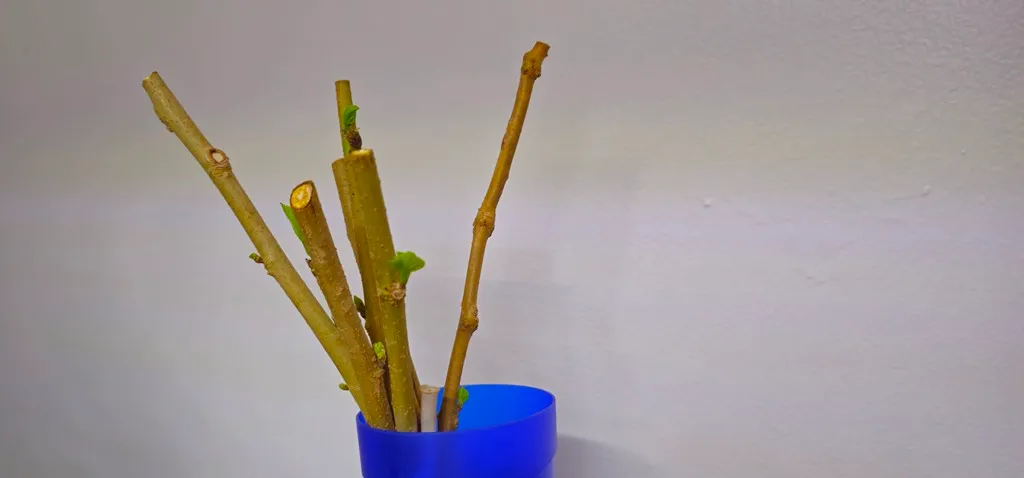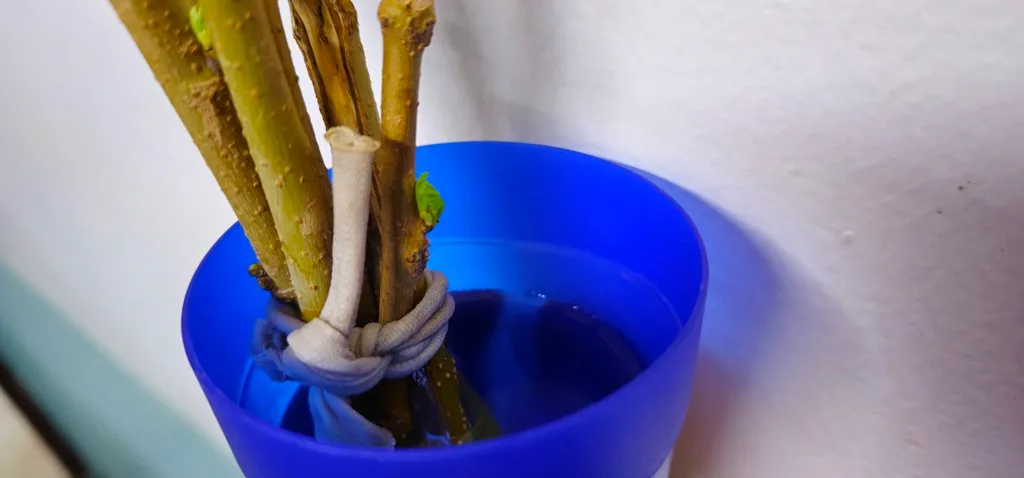This is a piece of branch from our neighbor’s mulberry tree. I asked for it while they were cutting some branches from their large mulberry tree in front of their house. Before soaking it in water, I cleaned the bark and removed the small leaves. I made sure the branch I took was somewhat mature to ensure it would root and thrive.
It's been five days since it was soaked, and small sprouting leaves have appeared. I also noticed tiny roots emerging-hopefully, they will survive. Every other day, I change the water and clean the submerged part of the branch to prevent algae from forming. I also added a pinch of salt to the water.


Once the roots fully develop, I’ll transfer it to a small pot and try to turn it into a bonsai. I’ll keep it small by trimming the roots, cutting off extra branches, and removing the larger leaves. We can create bonsai trees from regular trees through "trunk chopping." I learned this about three years ago from a Japanese TV show.

It’s a simple way to start a bonsai from an existing tree, especially if you want to shape a mature tree into a bonsai. The first thing you need is healthy roots, and you must cover or wrap the branch with a cut to prevent it from rotting or getting damaged. That’s how sensitive the process of creating and caring for a bonsai is.
Carefully trim the roots to encourage a healthy root system. It’s best to do this during winter or early spring. Remember, well-draining soil is needed. I hope I succeed in this task.